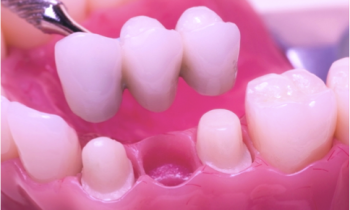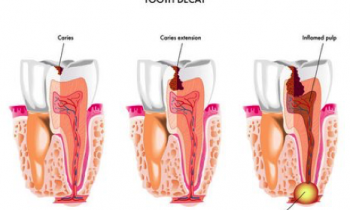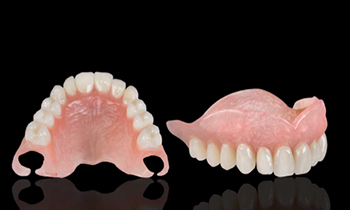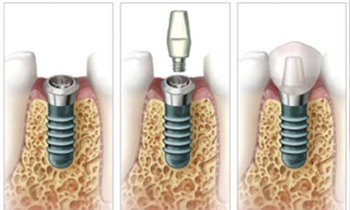
Veneers
Some teeth have intrinsic stains that cannot be whitened with bleaching gel, and some teeth are irregularly shaped or have mild crowding. All of these conditions can be corrected with dental veneers. Dental veneers are professionally fabricated pieces of porcelain that are cemented onto the fronts of teeth to give the appearance of perfectly shaped and perfectly whitened teeth. In some cases, veneers can achieve the same results as braces, but in just two weeks time. Veneers also have the advantage of being more conservative than crowns, but not everybody is a good candidate for veneers. Ask Dr. Abril if veneers are the best way to enhance your smile.

Tooth Whitening
Teeth can become stained over time due to smoking, coffee drinking, or other habits. With teeth whitening, stains can be removed, making teeth appear several shades whiter. Whitening can be done in the office or at home. The advantage of in-office whitening is that the teeth are whitened faster with professional-strength whitening gels under dental supervision. With take-home whitening, the bleaching gel that is used is not as concentrated, so patients can safely whiten their teeth at their own pace. Not everybody is a good candidate for tooth whitening, and those with sensitive teeth should be educated before proceeding, so ask Dr. Abril if you are a good candidate.

Dental Fillings
When bacteria in your mouth produce enough acid, they can create a hole, or cavity, on your tooth. If the hole becomes large enough, then a dental filling may be indicated. Dental fillings can be made of several different materials, but the most common by far in the United States are composite resin fillings. These types of fillings have the advantage of being tooth-colored, so they blend into your smile. They are also durable and take relatively little time to place.

Dental Cleanings
Plaque is a sticky film where food and bacteria accumulate on teeth, and tartar is plaque that has become calcified and difficult to remove. Both plaque and tartar can contribute to bone loss/periodontal disease, as well as tooth decay, if they are not removed regularly. Patients who have good home care and very little tartar will need a prophy, or regular cleaning, every 6 months. Some patients have heavy tartar and staining and require a more labor-intensive cleaning called a debridement. Patients with periodontal disease may require more time in the chair as well as dental anesthesia in order to perform a thorough cleaning (scaling and root planing), and they will need to return every 3-4 months to maintain their periodontal health.

Crowns/Caps
A crown or cap is a metal, porcelain, or zirconia restoration that is placed on top of an existing tooth, either to make it stronger or to cosmetically improve its appearance. A crown is usually indicated on teeth that have just had a root canal, on broken teeth, on cracked teeth, or on teeth with large fillings that don’t have a lot of natural tooth structure remaining. The crown shade can be altered to match your existing tooth shade, and its shape can be formed so that the tooth looks like the original tooth. A crown usually takes two appointments: the first appointment is to prepare the tooth, take an impression, and make a temporary crown, and the second appointment is to deliver your permanent crown.

Bridges
When a patient has a missing tooth, a bridge is a way to replace it. Crowns are placed on the teeth adjacent to the missing tooth, and an additional crown is attached to the adjacent ones to fill in the missing space. Bridges can assist with chewing, and they can hide the embarrassment of a missing tooth.
Bridges are usually made of porcelain with a metal skeleton, or of solid zirconia. If the teeth next to a space have good bone support and enough natural tooth structure, then a bridge may be a good option to replace a missing tooth.

Endodontic Therapy/Root Canals
When a cavity has become so large that it reaches the nerve in the center of a tooth, a patient will usually begin to feel pain. Similarly, a crack that is deep enough may reach the nerve, leading to discomfort upon chewing. In both of these situations, endodontic therapy, or a root canal, may be indicated. A root canal is a procedure where the nerve of a tooth is removed, and the space around it is disinfected and sealed. Soon after the procedure is completed, the pain associated with the cavity or crack goes away, and any infection will eventually dissipate. Root canals are usually followed by a build-up and a crown.

Dentures
When a patient has lost all of his/her teeth in the upper or lower arch, a denture is fabricated. A denture is an acrylic prosthesis that beautifully replicates gums and teeth. The advantages of a denture are that a patient’s smile is restored, along with their ability to chew. Sometimes, a denture does not stay in place due to bone loss (which is more common in the lower jaw). When this is the case, implants can be placed to provide an anchor for the denture to snap into.

Partial Dentures
A patient who is missing some of his/her teeth can have them replaced with a partial denture. A partial denture is similar to a full denture, except that clasps hold the partial into place by grabbing onto existing teeth. Some teeth are made of metal and acrylic, and others are made of flexible plastics. Partials are a good option for someone with several missing teeth and good periodontal health.

Tooth Removal/Extractions
When a tooth has a cavity that is too large to be restored, when it has periodontal disease, when it is causing an infection, or when it is jeopardizing another tooth, an extraction is indicated. Patients are numbed in the problem area and the tooth is removed. After a few days the gum tissue grows over the area where the tooth was, and bone eventually fills in over time. Extractions can be a very important tool when it comes to eliminating lingering pain, and restoring proper hygiene and periodontal health.

Dental Implants
When a single tooth is missing, and the adjacent teeth are not strong enough to hold a bridge, an implant is an excellent solution. Implants are titanium screws that are placed into alveolar bone. Once the bone fuses to the implant, a tooth-shaped prosthesis or crown is attached to the implant. An advantage of implants is that they can be easily flossed, and tooth structure does not have to be removed from adjacent teeth. Implants are one of the newest advances in dentistry, and they are popular due to their natural feel, great esthetics, and high rate of success.
